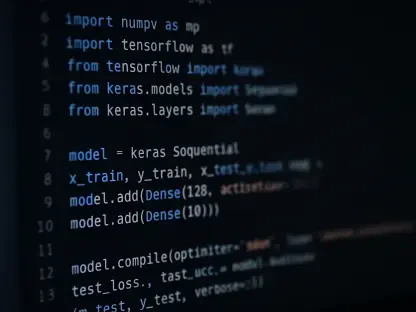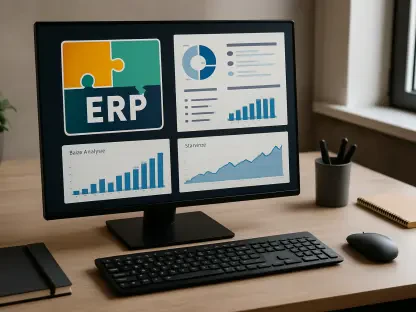For over a decade, DevSecOps has been heralded as the practice of seamlessly integrating security into the development and operations lifecycle. Despite its promise to enhance security, accelerate development, and cut costs, numerous organizations grapple with realizing its full potential. This struggle often stems from attempting to integrate security superficially rather than holistically. By merely adding new tools or forming specialized teams without embedding security processes into the development lifecycle, companies inadvertently create fragmented workflows that generate more problems than solutions. This article delves into the obstacles and proposes a more integrated, process-led approach to achieve superior security outcomes and operational efficiency.
The Promise and Pitfalls of DevSecOps
DevSecOps strives to abolish silos between development, security, and operations teams, embedding security seamlessly into the development process. This ideal integration is expected to lead to faster development cycles, decreased costs, and fewer security incidents. Unfortunately, many organizations find themselves falling short of these promises. Instead of achieving seamless integration, they end up with fragmented tools and processes that generate new issues. For example, one common problem is the superficial integration of security measures. Organizations may introduce new security tools and teams, but without true integration into the development lifecycle, these efforts can backfire.
Developers may face significant operational burdens, encountering decreased productivity and heightened frustration. This fragmented approach can result in security vulnerabilities slipping through the cracks, thus undermining the very goals of DevSecOps. The superficial adoption of DevSecOps practices often ends up as a paper over the cracks, leaving the fundamental issues unresolved. By addressing these pitfalls directly, organizations can begin to shift towards a more genuinely integrated approach.
The Need for a Process-led Approach
Overcoming these challenges requires a fundamental shift towards a process-led approach. This shift involves integrating security organically within the development lifecycle using collaborative and templatized processes. Instead of treating security as an afterthought, it should be an integral part of the development workflow. A process-led approach can reduce operational burdens and foster a culture of shared responsibility and collaboration. For instance, creating standardized, repeatable processes ensures security is built into every stage of development.
This encompasses adopting secure coding practices, implementing infrastructure guardrails, and leveraging the built-in security features of modern programming languages. By prioritizing processes over tools, organizations can establish a more sustainable and scalable approach to DevSecOps. This method emphasizes continuous improvement, where each iteration brings development and security closer together, resulting in a streamlined workflow that inherently incorporates security measures.
Securing the Software Supply Chain
A critical element of the process-led approach is securing the entire software supply chain. This involves ensuring that all components, from third-party libraries to deployment pipelines, are secure and trustworthy. By using standardized templates and reusable design patterns, organizations can reduce the risk of misconfigurations and vulnerabilities. Collaboration between platform engineering and product security engineering teams is crucial for securing the supply chain. When these teams work together, they can establish shared processes and a unified understanding of workflows, fostering a culture of collaboration.
This convergence ensures that security becomes an ingrained practice within development processes rather than an appended task. For example, using collaboration to implement reproducible infrastructure as code (IaC) patterns can mitigate misconfigurations. Teams can then focus on higher-level security controls and proactive risk assessments. By embedding security at every stage, the supply chain becomes more resilient and capable of withstanding potential threats.
The Role of Tools in DevSecOps
While tools are essential in DevSecOps, they should not be the primary focus. Instead, tools ought to support and enhance the foundational security practices established through a process-led approach. Rather than relying on them as main defense mechanisms, tools should provide assurance checks, automate repetitive tasks, and enforce security policies. For instance, dependency proxies and tiered scanning approaches can ensure thorough yet efficient security checks during continuous integration processes.
Tools should be strategically integrated to foster a safe, well-governed environment instead of overwhelming teams with tool-centric security implementations. Organizations must recognize that tools serve as augmenters of well-established processes rather than substitutes for comprehensive security practices. By focusing on tools in this strategic manner, organizations can achieve better security outcomes and operational efficiency. These tools then become enablers of security rather than a cumbersome addition that distracts from core development tasks.
Human-centric Collaboration and Incentives
Successful DevSecOps implementation depends on fostering a culture of collaboration and shared responsibility, going beyond just processes and tools. This culture includes aligning incentives, integrating shared metrics, and embedding security into everyday development workflows. Emphasizing human-centric collaboration can create an environment where security is everyone’s responsibility. Aligning incentives means ensuring all team members, from developers to security professionals, have a stake in the success of DevSecOps.
Shared goals, performance metrics, and recognition of contributions can achieve this alignment. By nurturing a culture of collaboration and shared responsibility, organizations can develop a more cohesive and effective approach to DevSecOps. When incentives and responsibilities align, more robust and lasting security practices naturally emerge, as every team member is motivated to prioritize security as part of their daily tasks. This human-centric approach is crucial for transforming DevSecOps from a theoretical concept into a practical, actionable strategy.
Proactive Security Measures
Shifting from reactive threat mitigation to proactive risk management is essential for successful DevSecOps. This shift involves using standardized templates, reusable design patterns, and secure coding practices to address security risks preemptively. Focusing on proactive measures can reduce the likelihood of security incidents and cultivate a more resilient development environment. Proactive security measures also include automating code generation and refactoring to remove vulnerabilities, minimizing dependencies, and reducing maintenance burdens.
Establishing security protocols via sidecar proxies and service mesh control planes can centralize and standardize authentication and authorization, thereby simplifying the complexity within application code. By adopting these proactive measures, organizations can create a more secure and efficient development process. These measures not only enhance security but also streamline development, allowing teams to innovate without being hampered by constant security concerns.
Conclusion
For more than ten years, DevSecOps has been praised as the practice that integrates security smoothly into the development and operations lifecycle. Despite its promises to boost security, speed up development, and reduce costs, many organizations find it challenging to fully realize these benefits. This difficulty often arises from a superficial approach to integrating security rather than a comprehensive one. When companies simply add new tools or create specialized teams without fully embedding security processes into their development lifecycle, they end up with fragmented workflows that cause more issues than they solve. This article explores the obstacles organizations face and suggests a more integrated, process-driven approach to attain better security outcomes and improve operational efficiency. The key lies in embedding security practices deeply within the development process to avoid fragmented workflows and to ensure a cohesive, effective implementation that meets the promise of DevSecOps.









